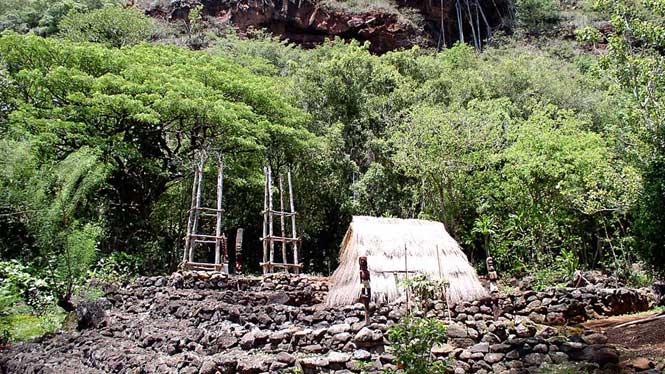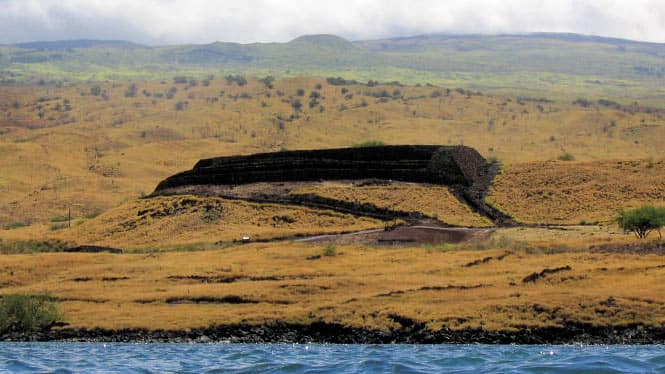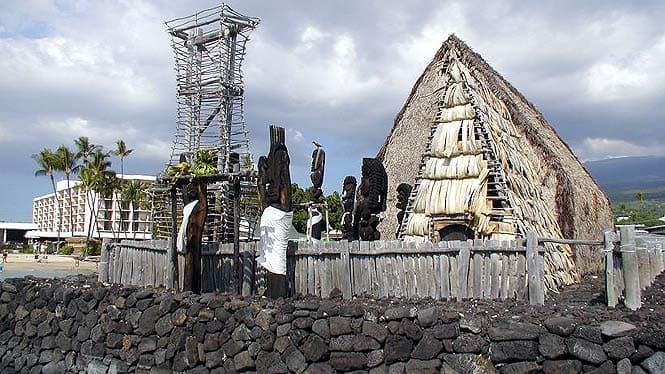Life in ancient Hawaii focused on propitiating the gods, and the various islands housed many types of temples invoking peace, war, health, or profitable fishing and farming. Chiefs and specific occupational groups, such as fishermen, practiced formalized worship in the heiau (place of worship). The heiau structure ranged from single houses surrounded by a wooden fence to stonewalled enclosures containing more than one house to the massive open-air temples with terraces, large stone platforms, and numerous carved idols in which ruling chiefs paid homage to the major Hawaiian gods.

The mapele heiau was the agricultural or economy-related temple that was dedicated to the god Lono. Offerings of pigs, vegetables and tapa (bark cloth) were made in hopes of guaranteed rain and agricultural fertility and plenty. The luakini heiau was the large sacrificial government war temple that was dedicated to the god Kuka’ilimoku (Ku). Human lives were taken at the altar when the assurance of success in combat was requested from Ku. The same goes for emergencies such as pestilence or famine.
Higher-ranking position holders and priests had the authority to construct agricultural temples, whose ceremonies were open to all. War temples dedicated to Ku could only be built by the ali’i-ai-moku (lower-ranking chief and landowner). The king, high-ranking chiefs and members of the Ku priesthood were the only ones authorized to enter. Dedication of the war temple by anyone else was considered treason. Only the high chief could undertake the rituals involving human sacrifice, which was considered the highest form of offering.
Pu’ukohola Heiau

The Pu’ukohola Heiau on the Big Island is of the few heiaus still standing today. The heiau was constructed in honor of Ku. Kamehameha I gathered a workforce of chiefs, commoners, men, women, and children to build the massive temple. According to ancient Hawaiian belief, when a chief rival was sacrificed Ku was pleased. Therefore, human sacrifice was often made at Pu’ukohola Heiau.
Ahu’ena Heiau

Ahu’ena Heiau, also on the Big Island, was dedicated to Lono, and was once the personal heiau of Kamehameha I. It is currently located on the grounds of the King Kamehameha Kona Beach Hotel, and is open to the public during the day. Carved idols adorn the area, with a golden plover perched on the highest one. Hawaiians believe that this bird led the ancient Polynesians to Hawaii.
The end of the kapu (taboo) system kicked off a mission to burn down every heiau in Hawaii, led by Queen Kaahumanu and Kamehameha II. A few still remain today. Some of which have been restored while others are slowing breaking down. Hawaiians do ask that visitors show respect upon approaching a heiau. Keep in mind that these structures have endured hundreds of years.